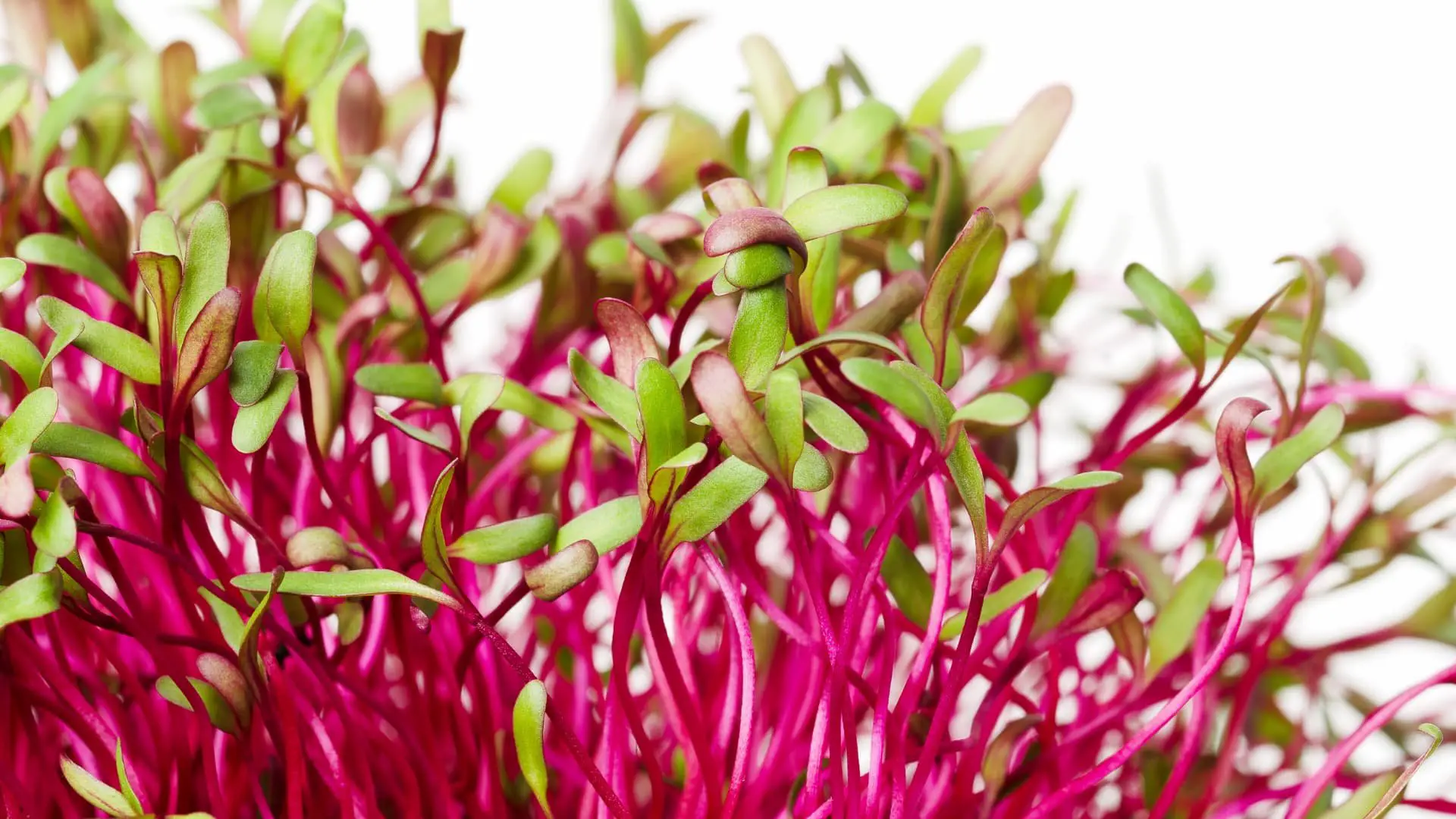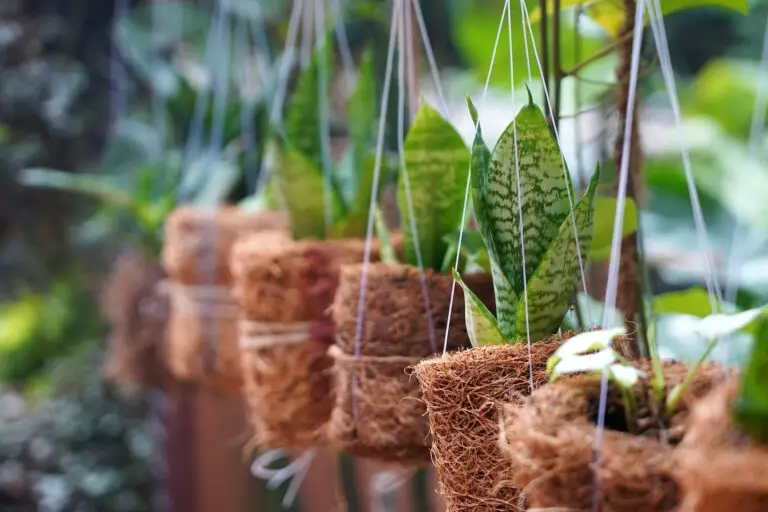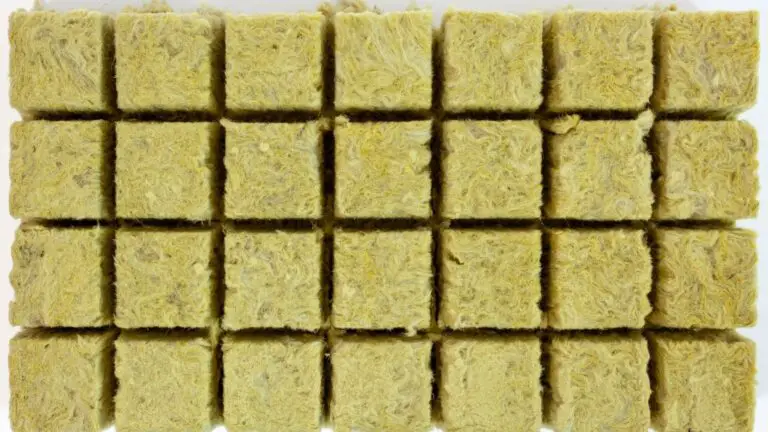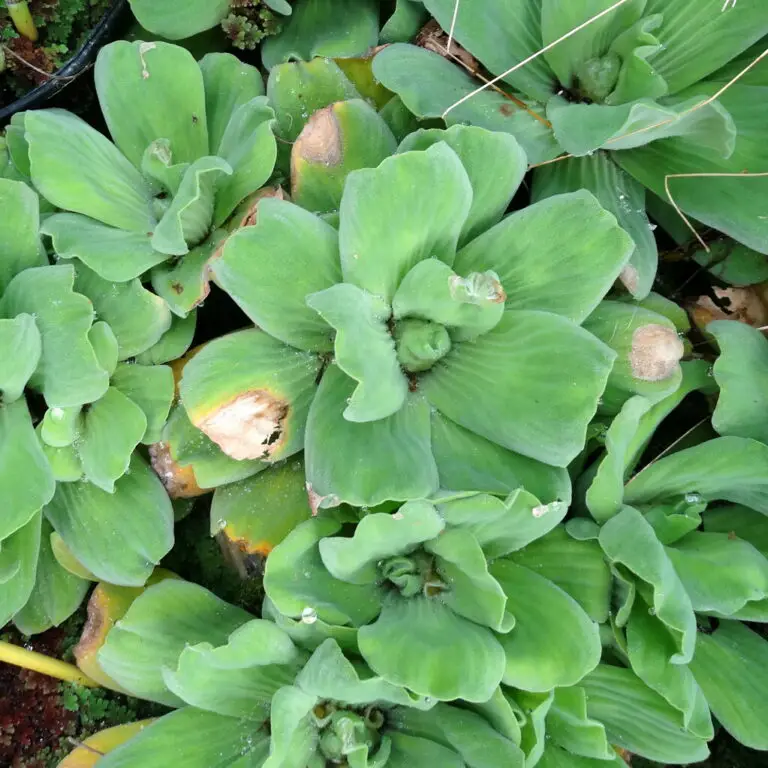What Are the Best Growing Mediums for Growing Microgreens In Hydroponics?
Disclosure: Your purchases through our links may earn us a small commission, supporting our site’s ability to provide valuable information to our readers. Rest assured, it won’t impact your price. Thank you for your support.
Are you looking for information on hydroponic growing media for microgreens?
Hydroponic growing is a great way to grow plants without soil. There are many different types of hydroponic systems, and each has its own advantages and disadvantages.
This blog post will focus on the best mediums for growing microgreens.
When growing microgreens, the hydroponic growing medium you use is essential. Not all media are suitable for microgreens – some can be too harsh on the plants’ delicate roots.
Related: 10 Characteristics of Ideal Hydroponic Growing Medium
This blog post will discuss which types of media are best for microgreens.
Start growing microgreens today! Choose a suitable hydroponic medium, and you’ll be on your way to eating healthier than ever before.
What Are Microgreens?
Microgreens are a type of edible plant harvested when it is still very young. They are typically smaller than regular greens and have a more intense flavor. Microgreens are becoming increasingly popular in the culinary world and can be used in salads, toppings, or other dishes.
Microgreens are a great source of vitamins, minerals, and other nutrients. They are an excellent source of vitamin A, vitamin C, and vitamin K. They are also very healthy – they contain multiple times more vitamins and minerals than regular greens. They also contain a substantial amount of fiber, protein, and essential fatty acids.
There are various types of microgreens, including arugula, basil, chives, cilantro, dill, fenugreek, kale, kohlrabi, lavender, lemongrass, lime basil, mizuna, mustard greens, oregano, parsley, peppermint, rosemary, sage, sorrel, and thyme.
Benefits of Microgreens
– Adds flavor and nutrition to dishes
– A good source of vitamins, minerals, and other nutrients
– Variety of flavors and colors
– Exciting new trend in the culinary world
– Allows you to be creative in the kitchen
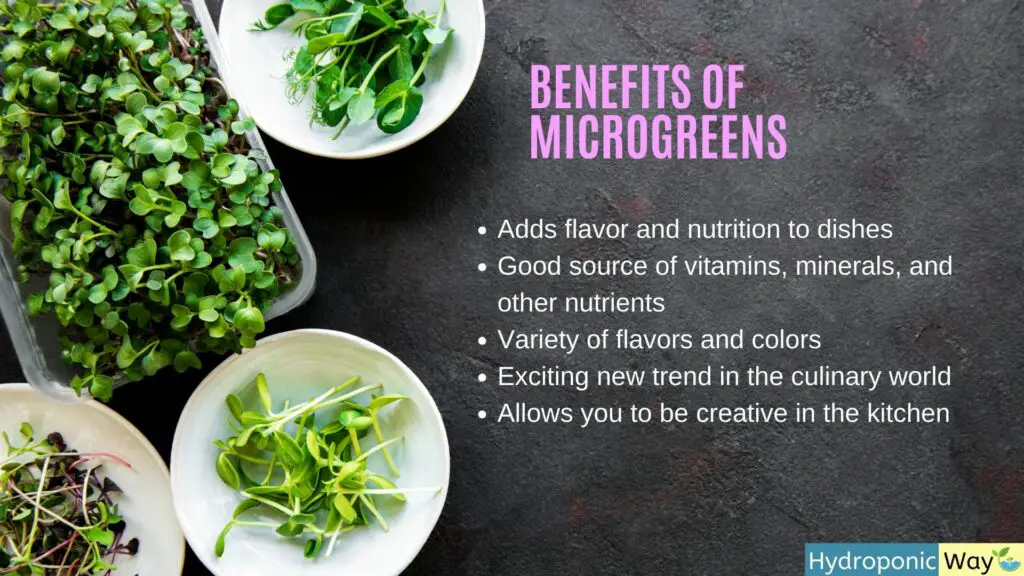
Can Microgreens Grow without Soil?
Microgreens can grow without soil, but they typically grow best when planted in soil. Some people use a hydroponic system to grow microgreens without soil, but this can be more difficult and may not yield the same results as growing them in soil.
The best growing medium for growing microgreens is soil. Soil is a natural growing medium rich in nutrients and provides good drainage. It is crucial to choose well-drained soil high in organic matter to ensure optimal growth of your microgreens.
Learn more on How to Grow Kratky Method Plants: A Passive Hydroponic System
What Are the Best Hydroponic Growing Mediums Used to Grow Microgreens?
Coco coir, perlite, and vermiculite are the common growing mediums used in hydroponics to grow microgreens, while there are various hydroponic growing mediums that you can use to grow microgreens. All of these growing mediums have different benefits and drawbacks, so it is important to choose the one that is best suited for your needs.
It can be challenging to choose a hydroponic growing medium for your microgreens. Different hydroponic systems require other growing mediums, and some require a seedling or starting mix. The type of plant you are growing will determine the best hydroponic growing medium to use.
Coco coir.
Coco coir is a natural growing medium made from the fibrous husks of coconuts. It is a popular growing medium for hydroponics because it has good drainage, and is environmentally friendly.
Coco coir is available in loose form or as a compressed block. When using coco coir in a hydroponic system, it is important to re-wet the coco coir before using it. This will help to activate the coconut fibers and ensure good drainage.
Coco coir also absorbs water well, so it is important to monitor the moisture levels in your hydroponic system.
Coco coir is suit for arugula, basil, cliantro, lettuce,radish. For kale, kohlrabi, and watercress coco coir is good but they are difficult microgreens to grow and may not yield much in hydroponics.
Related:
Get Growing With Coco Coir
Coco Peat vs Coco Coir: What’s the Difference?
Perlite.
Perlite is a volcanic glass that has been heat-treated to create small, white, spongy particles. It is a popular growing medium for hydroponics because it is lightweight, inert, and does not decompose.
Perlite is available in different forms, fine medium, coarse and super coarse. Fine perlite provides better water retention.
Perlite is a great growing medium for microgreens because it does not decompose over time. It also does not need to be replaced as often as other hydroponic growing mediums. However, it is important to monitor the moisture levels in your hydroponic system as perlite can quickly dry out plants.
Perlite is good for fenugreek.
Related: Perlite: A Hydroponic Growing Medium for Your Garden
Vermiculite.
Vermiculite is a mineral that has been heat-treated to create small, light brown particles. It is a popular growing medium for hydroponics because it retains water well, is lightweight, and does not decompose.
Vermiculite is a great growing medium for microgreens because it retains water well and does not decompose over time. However, vermiculite can quickly dry out plants if not monitored closely.
Vermiculite is good for chives, and dill. For mint, mustard, parsley, red clover vermiculite is good but they are difficult microgreens to grow and may not yield much in hydroponics.
Related: How Can Vermiculite Hydroponics Help You Grow Delicious, Nutritious Vegetables?
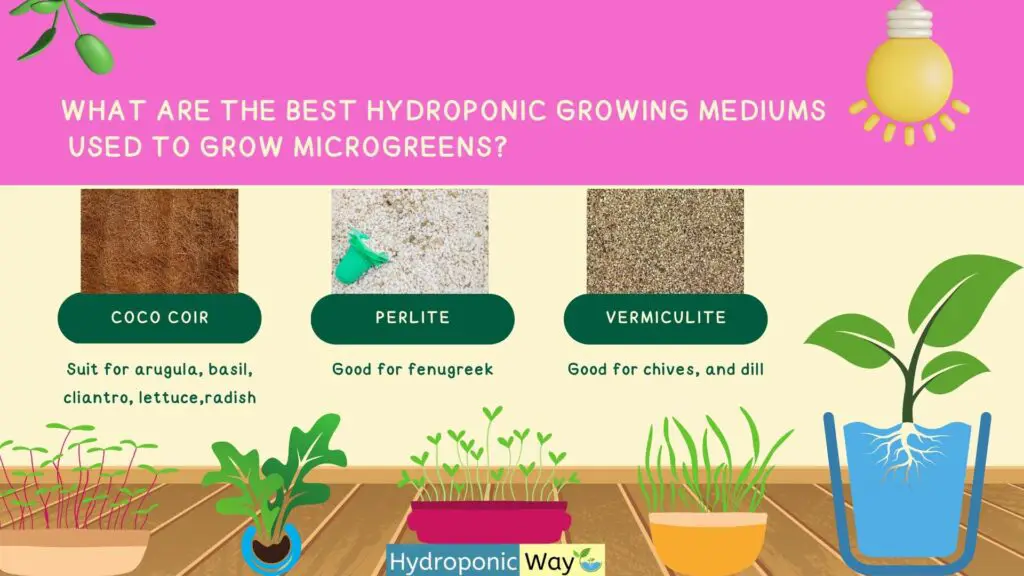
In Conclusion
The hydroponic growing mediums best suited for microgreens vary depending on the plant type you are growing.
Coco coir, perlite, and vermiculite are some of the most popular hydroponic growing media for growing microgreens. All of these growing mediums have different benefits and drawbacks, so it is important to choose the one that is best suited for your needs.
Choosing a hydroponic growing medium for your microgreens may be difficult, but with some study, you should be able to discover the best one for you.
Thank you for reading!
If you are looking to buy one or several growing mediums for your garden, click the below-shown links to buy a selected suitable one. We have filtered the featured growing mediums to ease your selection process.
If you are looking for microgreens seeds click here and select the seeds you need.

